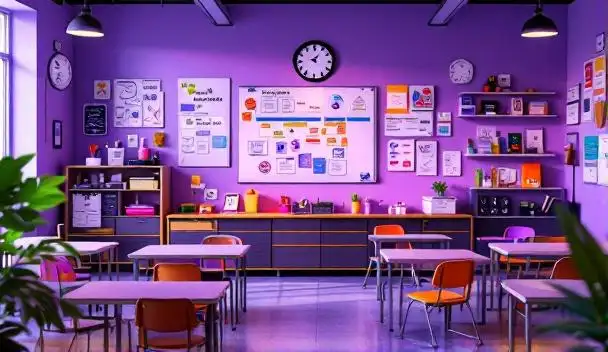Unlocking the Power of Visual Learning in Problem-Solving
Teaching problem-solving effectively requires more than just verbal or written instructions; it involves engaging students through visual strategies that leverage our brain's innate ability to process visual information. This article explores how educators can utilize visual tools, representations, and models to develop students' critical thinking and problem-solving skills across diverse educational contexts, including special education and STEM disciplines.
Utilizing Visual Representations to Clarify and Organize Complex Problems
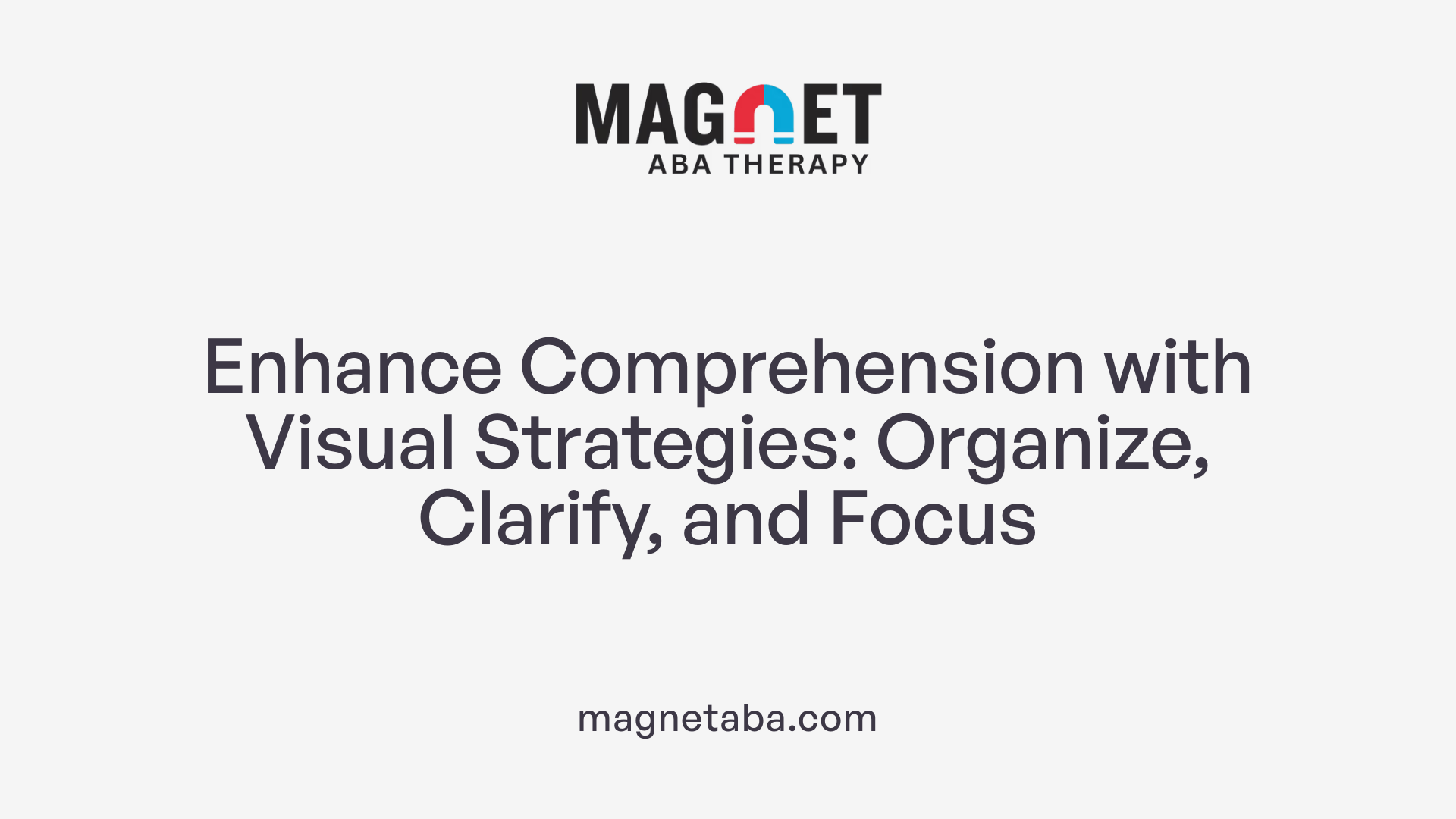 Visual strategies serve as essential tools in teaching and problem-solving, helping students organize information, understand relationships, and focus on reasoning. Teachers often employ various visual aids such as tables, diagrams, models, and maps to guide students through complex problems.
Visual strategies serve as essential tools in teaching and problem-solving, helping students organize information, understand relationships, and focus on reasoning. Teachers often employ various visual aids such as tables, diagrams, models, and maps to guide students through complex problems.
One effective approach involves the use of pre-equation visual strategies. Before introducing algebraic or mathematical formulas, educators encourage students to employ visual representations like tables, strip diagrams, or percent bars. These tools assist in organizing the given data, distinguishing relevant details from extraneous information, and clarifying the problem's goal. For instance, a table can compare different quantities, while a strip diagram can provide a visual partition of parts and wholes.
Numerical tools like number lines are instrumental in understanding addition and subtraction, especially as students develop mental models of numerical relationships. Similarly, strip diagrams or model drawings are used to visualize multiplicative comparisons, fraction operations, and proportions. These aids make abstract concepts more concrete, allowing learners to manipulate and understand relationships more effectively.
Developing understanding through visual aids involves creating diagrams or models that depict the problem's structure. For example, flowcharts can map out steps in a process, cause-and-effect diagrams clarify the relationships among variables, and graphic organizers help students categorize and connect ideas.
Incorporating these visual tools systematically and explaining their purpose through think-aloud demonstrations can significantly enhance student comprehension. Teachers guiding students to interpret and create their own visual representations foster independence and deepen conceptual understanding.
Research shows that using multiple forms of visual representations benefits learners across grade levels. From young children making pictorial drawings to high school students creating detailed diagrams, visuals support diverse learning styles and promote critical thinking.
Summary table of visual strategies in problem solving:
| Visual Tool | Application | Benefits |
|---|---|---|
| Tables | Organizing data, making comparisons | Clarifies relationships and patterns |
| Diagrams & Models | Visualizing relationships and processes | Enhances understanding and reasoning |
| Number Lines | Understanding addition, subtraction, and sequences | Builds mental number sense |
| Strip Diagrams | Analyzing word problems involving parts-whole relationships | Simplifies complex problems |
| Flowcharts | Mapping procedural steps | Clarifies processes and decision points |
| Graphic Organizers | Structuring ideas and concepts | Aids memory and connections |
Overall, integrating these visual tools effectively into teaching can help students develop stronger problem-solving skills, improve retention, and foster a deeper understanding of mathematical and scientific concepts.
Fostering Independence and Mathematical Reasoning through Visual Models
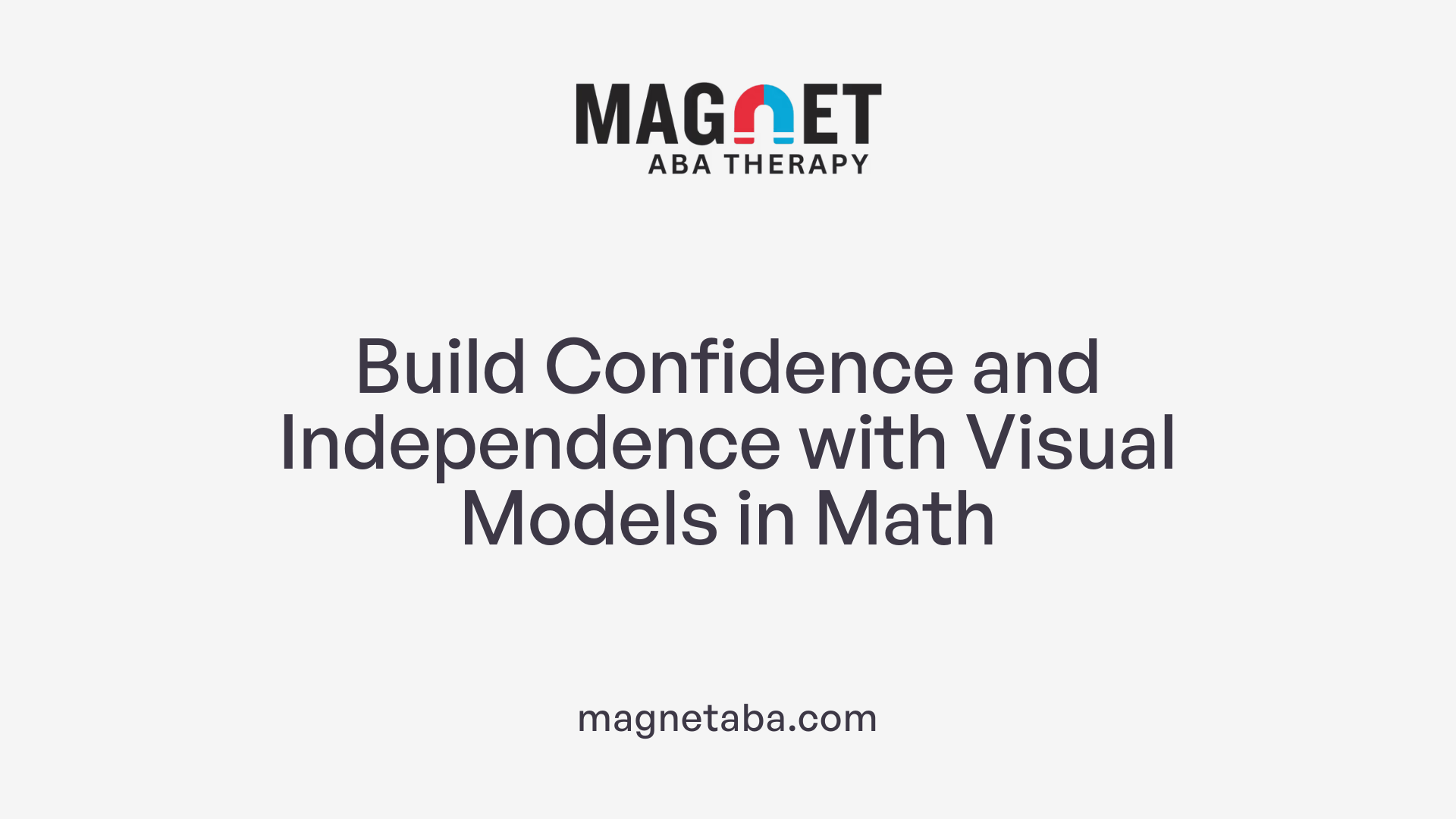
How can visual representations enhance problem-solving teaching and learning?
Visual tools such as tables, number lines, strip diagrams, graphs, and pictorial models are fundamental in teaching problem-solving. They help students organize complex information and see relationships among different elements of a problem. Before introducing equations or abstract symbols, students can use these visuals to clarify their understanding and distinguish essential details from irrelevant ones.
Using consistent visual strategies over time encourages students to become more independent learners. When teachers model these visuals along with verbal explanations, students learn not only to replicate the visuals but also to understand their purpose, which boosts their confidence in solving diverse problems.
Incorporating reflection and questioning about visual models promotes deeper mathematical reasoning. Students learn to analyze the diagrams, predict next steps, and verify their solutions visually. Research from educational authorities such as the Institute of Education Sciences and the What Works Clearinghouse emphasizes that this approach improves comprehension and problem-solving skills.
Furthermore, visual representations allow students to manipulate and experiment with relationships, fostering critical thinking. For example, shifting from concrete manipulatives to abstract equations becomes smoother when students visually grasp the underlying concepts. This strategy aligns with the CRA (Concrete-Representational-Abstract) framework, systematically transitioning students toward abstract reasoning.
Overall, the integration of visual models and consistent verbal modeling creates an engaging learning environment where students independently develop reasoning skills, making problem-solving an accessible and understandable process.
Leveraging Visual Thinking Strategies (VTS) to Enhance Critical Thinking
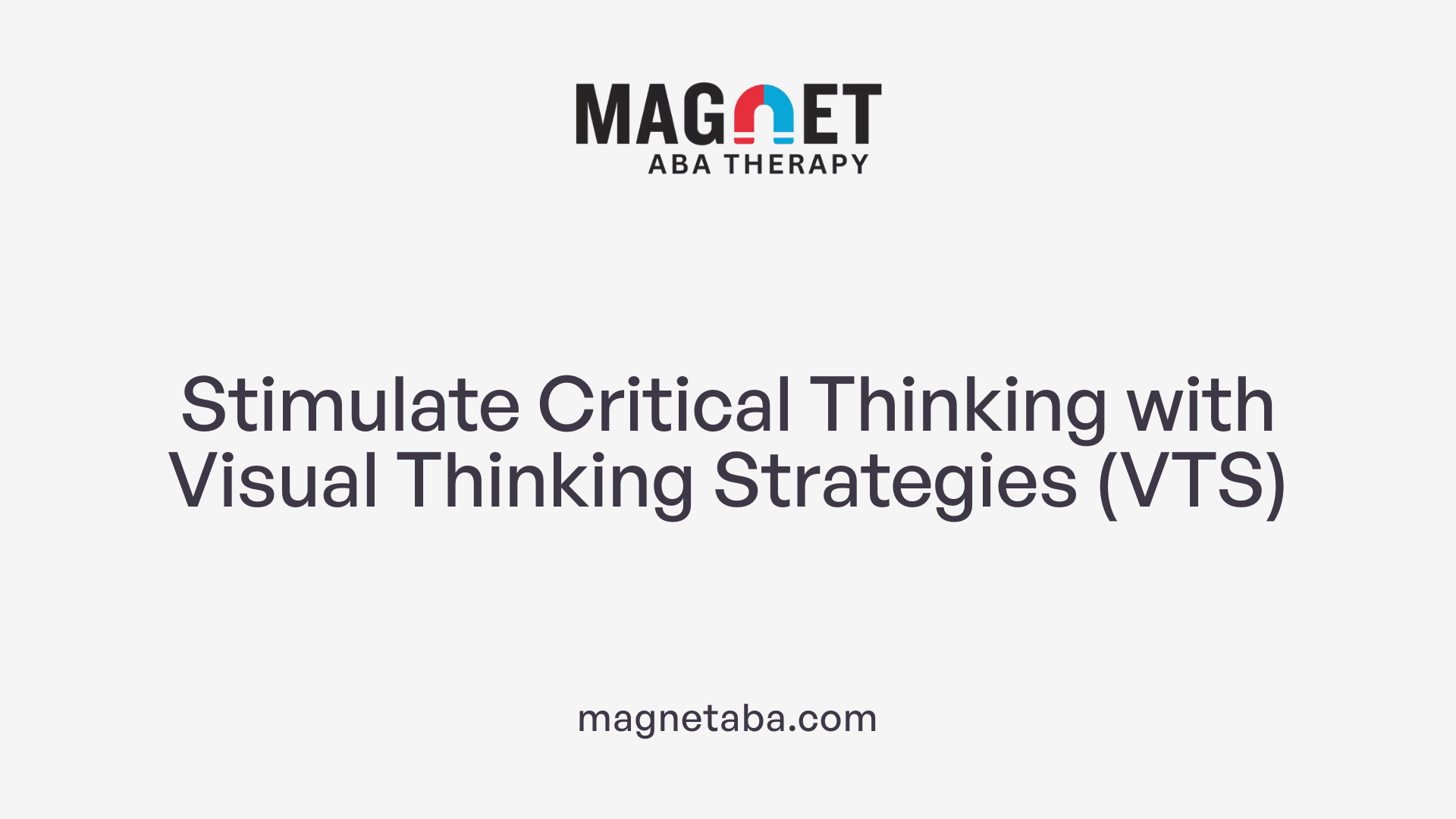
Origins and principles of VTS
Visual Thinking Strategies (VTS) was established in 1991 by Phillip Yenawine of the Museum of Modern Art and Abigail Housen from Columbia University. Originally developed for art education, VTS emphasizes selecting meaningful visual images, such as artworks or photographs, and fostering discussion through guided questions. Its core principles encourage open-ended exploration, critical observation, and evidence-based reasoning, making it adaptable across age groups and academic disciplines.
Guided questioning and discussion of visual art
In VTS sessions, participants silently observe a carefully chosen image before engaging in discussion. The facilitator asks three key questions: 'What’s going on in this picture?', 'What do you see that makes you say that?', and 'What more can we find?'. These questions promote active observation, inference, and critical thinking. The facilitator’s role includes paraphrasing responses non-judgmentally, creating a safe environment that encourages free expression and collaborative analysis.
Development of evidence-based thinking and communication skills
This method promotes articulation of ideas and reasoning. As participants discuss their observations, they learn to support claims with evidence, fostering argumentation skills. Incorporating writing exercises linked to responses further reinforces the ability to state claims, provide evidence, and summarize findings. The approach not only enhances analytical skills but also sharpens communication and promotes a collective understanding, which is fundamental for problem-solving.
What are visual thinking tools, and how do they aid problem-solving?
Visual thinking tools—such as diagrams, mind maps, flowcharts, and infographics—are graphical methods that organize and illustrate ideas. They leverage the brain’s natural capacity for visual processing, helping to make abstract concepts more concrete. These tools facilitate analysis, reflection, and the recognition of relationships among ideas, making problem-solving more accessible.
When students use visual aids, they can better grasp complex information, identify patterns, and explore different solutions. Visual tools also support cognitive processes like connecting ideas and evaluating outcomes. Teachers can incorporate these strategies into classroom instruction, encouraging collaborative brainstorming and systematic analysis, which enhances critical thinking and creative problem resolution.
In summary, VTS and visual thinking tools are powerful strategies to develop deeper understanding, articulate reasoning, and foster innovative problem-solving skills in learners.
Evidence-Based Practices for Visual Problem-Solving Instruction
What evidence-based practices support teaching problem-solving visually?
Implementing visual strategies in problem-solving instruction is supported by numerous research findings. Teachers are encouraged to utilize schematic diagrams, graphic organizers, and various visual models to make abstract concepts more accessible. These tools help students organize information, recognize relationships among elements, and focus on relevant details of a problem.
The use of the Concrete-Representational-Abstract (CRA) framework particularly stands out. This systematic approach guides students from manipulating concrete objects to creating visual representations and finally understanding abstract symbols. Such a progression solidifies comprehension and fosters deeper learning of mathematical concepts.
Another powerful practice is the integration of Visual Thinking Strategies (VTS). Originally developed for art education, VTS involves selecting meaningful images or artworks and asking students open-ended questions like 'What’s going on in this picture?' and 'What do you see that makes you say that?'. This method encourages evidence-based reasoning, critical thinking, and collaborative discussion. When adapted for problem-solving, VTS helps students articulate their thought processes and develop reasoning skills crucial for tackling complex tasks.
Furthermore, guided discussion and reflection are vital. Teachers demonstrating how to create and interpret visual representations aloud—thinking aloud—help students understand the purpose of each visual aid. Explicit instruction on visualization techniques, combined with interaction and feedback, supports learners, especially those with difficulties in understanding mathematical concepts.
Research by Boonen et al. (2014) and Krawec (2014) emphasizes that these practices—visual models, the CRA framework, and VTS—strengthen problem-solving accuracy and reasoning. When integrated within constructivist and supportive instructional models, including worked examples and collaborative activities, visual problem-solving strategies can significantly improve student outcomes in mathematics and beyond.
Applying Visual Strategies in Special Education Contexts
What are effective visual strategies for teaching problem-solving skills?
Implementing visual supports is fundamental in special education for enhancing problem-solving skills. Teachers effectively use tools like diagrams, flowcharts, graphic organizers, and models to help students analyze relationships and understand complex concepts.
Visual aids such as concept maps, cause-and-effect diagrams, and sticky notes serve to break down problems into manageable parts. These representations clarify the structure of problems, making it easier for students to focus on relevant information and develop reasoning.
Using manipulatives, number lines, and pictorial representations introduces foundational math concepts in early grades. For older students, strip diagrams and relationship maps help analyze word problems and compare quantities.
Incorporating digital tools—such as virtual whiteboards, videos, and interactive media—can increase engagement and support remote or hybrid learning environments. These tools make visuals more dynamic and accessible.
Step-by-step instructions on creating visuals are essential, especially for students with disabilities. Explicit teaching about how to develop and interpret visuals—like drawing flowcharts or labeling diagram parts—builds independence and comprehension.
Connecting visual strategies to real-life scenarios enhances relevance, encouraging students to apply problem-solving skills outside the classroom. For example, designing a visual plan for organizing supplies or solving daily challenges fosters practical understanding.
Finally, involving students in creating their own visuals—such as drawing their problem models or explaining their diagrams—promotes active learning. Discussions and think-alouds of visual representations deepen critical thinking and evidence-based reasoning.
Using a combination of these visual supports, coupled with explicit instruction and interactive techniques, helps students with disabilities develop stronger problem-solving skills. Over time, these strategies improve understanding, independence, and confidence in tackling a variety of academic and real-world challenges.
Models and Diagnostic Tools for Visual Problem-Solving
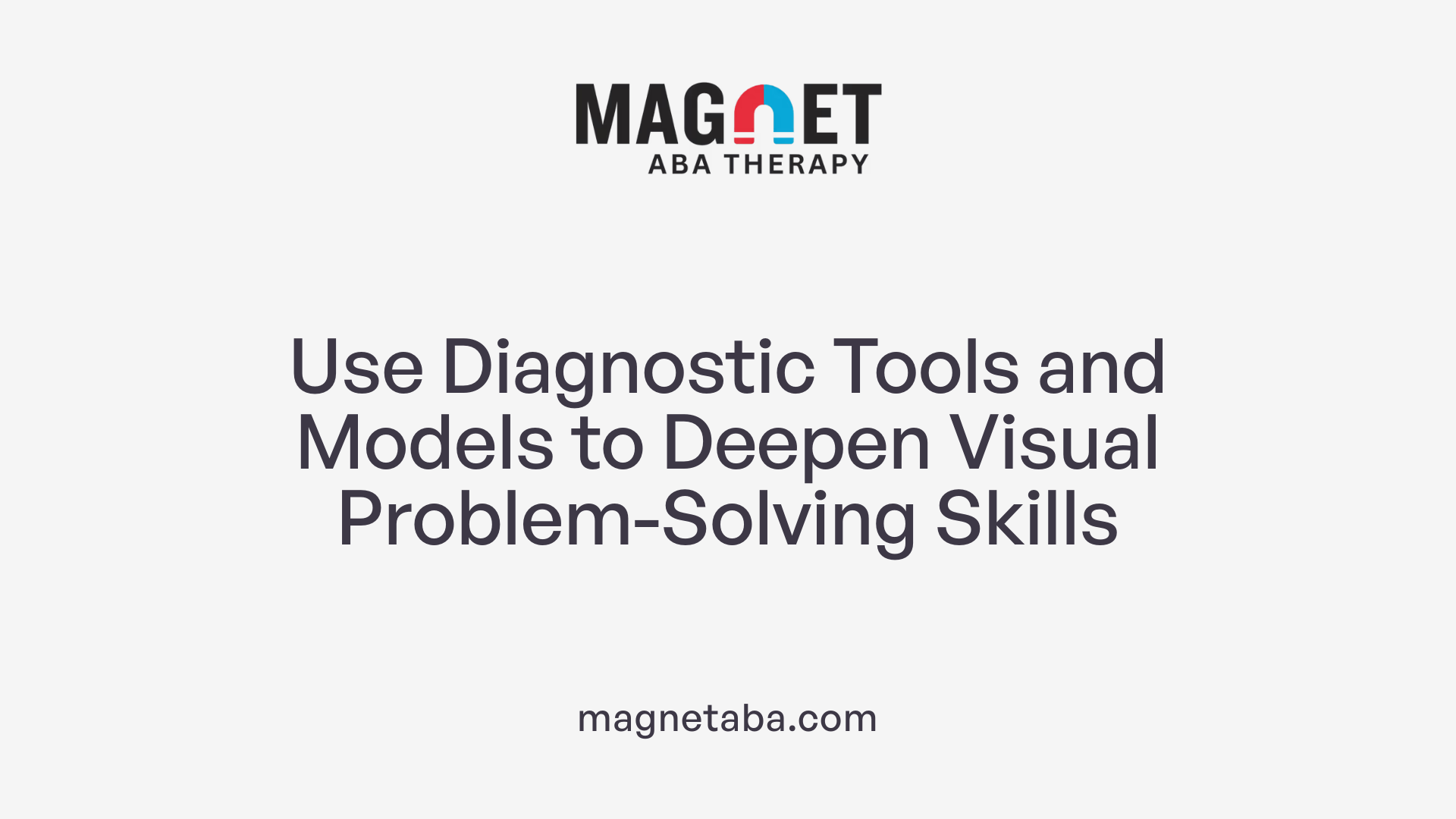
What are some models or diagnostic tools used for teaching problem-solving visually?
Teaching students to approach problems visually can be significantly enhanced using specific models and diagnostic tools. One foundational framework is the iceberg model, which encourages learners to look beneath the surface of issues and analyze root causes rather than just symptoms. The iceberg highlights four levels—events, patterns, systemic structures, and mental models—helping students develop a deeper understanding of complex problems.
Visual thinking routines like concept mapping enable students to organize ideas and visualize relationships among concepts. These maps help in identifying connections, underlying assumptions, and systemic structures, making abstract ideas more concrete. Visualization of systems involves diagrams that depict how different components interact within a system, illustrating feedback loops and causal relationships.
Causal loop diagrams are particularly valuable for representing feedback mechanisms and cause-and-effect relationships. They use arrows and polarity signs to show whether variables reinforce or balance each other, offering insights into system behavior over time.
System archetypes such as "Fixes that fail" or "Shifting the burden" serve as templates for recognizing recurring patterns in complex problems. Understanding these archetypes helps students predict potential pitfalls and develop sustainable solutions.
Flowcharts are another essential tool, illustrating step-by-step processes or decision pathways. They simplify complicated procedures and facilitate strategic planning.
Collectively, these models and tools enhance students’ ability to analyze problems comprehensively, recognize systemic influences, and generate innovative solutions. Employing a variety of visual aids nurtures critical thinking, supports structural understanding, and encourages sustainable problem resolution.
Engaging Students in Visual Problem-Solving Activities and Curriculum Integration
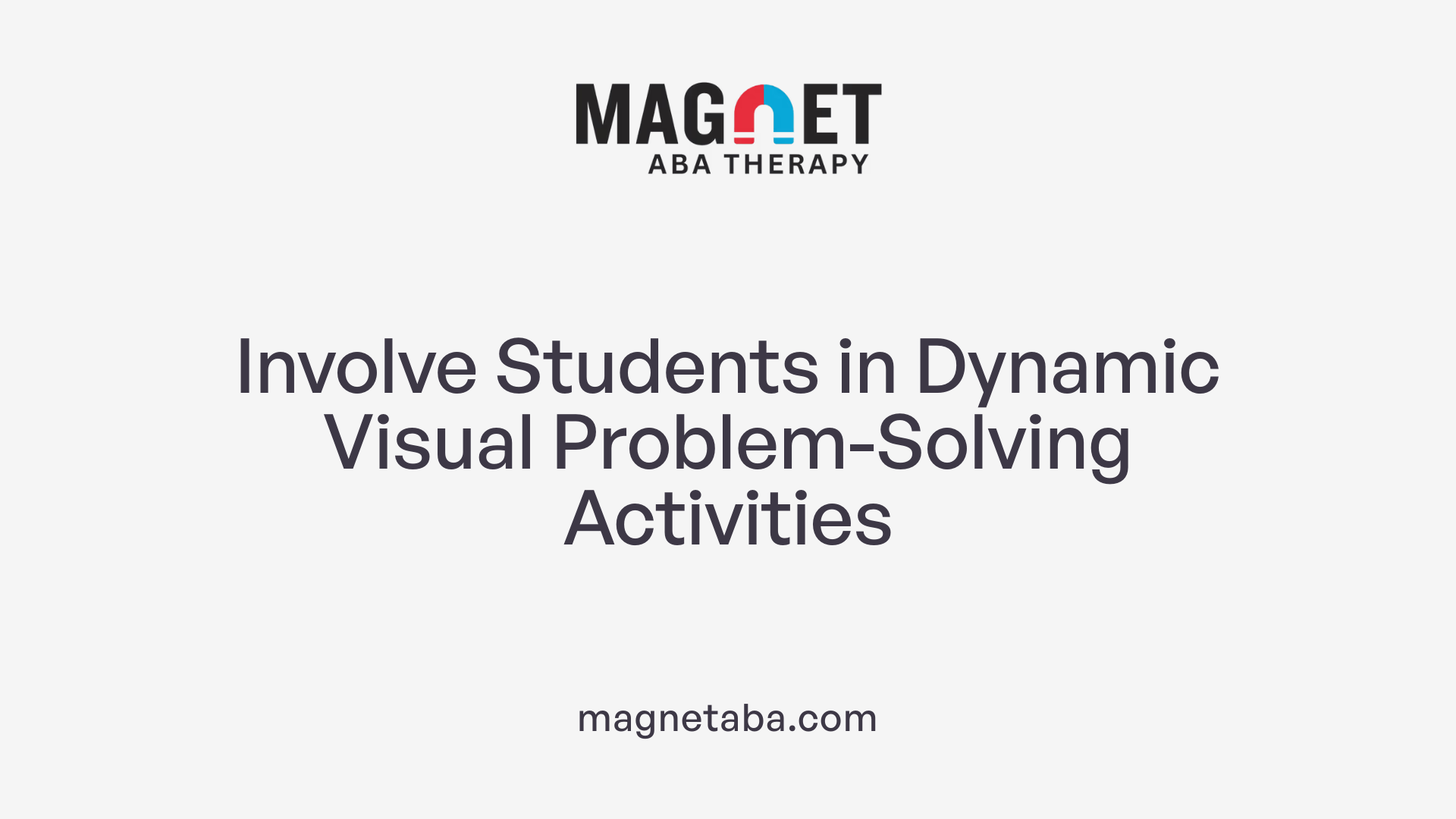 Teachers can effectively involve students in problem-solving by using visual routines like 'See, Think, Wonder,' which encourages careful observation, interpretation, and question formulation about images or objects. These routines help students organize information and distinguish relevant details from extraneous ones, fostering curiosity and critical thinking.
Teachers can effectively involve students in problem-solving by using visual routines like 'See, Think, Wonder,' which encourages careful observation, interpretation, and question formulation about images or objects. These routines help students organize information and distinguish relevant details from extraneous ones, fostering curiosity and critical thinking.
Implementing Visible Thinking Strategies (VTS) further promotes active discussion and collaborative analysis. In VTS sessions, students examine artworks or visual materials and respond to open-ended questions: 'What’s going on in this picture?', 'What do you see that makes you say that?', and 'What more can we find?'. This approach cultivates evidence-based reasoning, supports diverse perspectives, and deepens understanding.
Interactive activities such as sketching ideas, diagramming relationships, and mapping concepts are also valuable. These hands-on tasks make abstract ideas more concrete and accessible, especially for visual learners. Creating visual maps or flowcharts helps clarify complex problems and develop strategic thinking.
Integrating visual tools into problem-solving lessons and daily routines enhances comprehension and engagement. Teachers can use visual aids like charts, diagrams, graphic organizers, and digital resources to illustrate mathematical concepts, science processes, and real-world scenarios. Explaining the purpose of each visual and demonstrating how to interpret and use them through think-aloud techniques further supports student mastery.
Embedding argument writing and reflection activities based on visual discussions encourages students to articulate reasoning, evaluate solutions, and deepen learning. By consistently blending visual routines, interactive activities, and visual supports, educators can create a stimulating environment that fosters critical thinking, collaboration, and confidence in problem-solving across the curriculum.
For more strategies, searching 'Visual problem-solving activities in classroom curriculum' provides insights into effective practices and innovative approaches to integrating visuals into daily instruction.
The Transformative Power of Visual Strategies in Education
Integrating visual strategies into teaching methods not only enhances understanding and engagement but also fosters critical thinking, independence, and collaborative skills essential for effective problem-solving. From early education to advanced STEM topics, visual tools like models, diagrams, and diagnostic frameworks serve as vital resources for educators aiming to equip students with the skills necessary to analyze, interpret, and solve complex problems confidently. Embracing research-supported practices such as Visual Thinking Strategies and systematic frameworks like CRA or iceberg models can transform traditional classrooms into dynamic environments of inquiry, creativity, and resilience. Ultimately, the strategic use of visuals paves the way for inclusive, innovative, and effective problem-solving education.
References
- [PDF] Effective Problem-Solving Instruction, Part 1: Visual Representations
- Using Visual Thinking Strategies in the Classroom - Edutopia
- To guide or to follow? Teaching visual problem solving at the ...
- Visual Problem-Solving: The Secret Sauce of Successful Teams
- [PDF] Powering Up Your Visual Learning Practice: Strategies to Help ...
- Page 5: Visual Representations - IRIS Center
- A Visual Tool for Teaching Holistic Problem Solving
- Visual Thinking Strategies: HOME - LibGuides
- 6 Proven Visual Learner Strategies For Students - Alexander Tutoring

